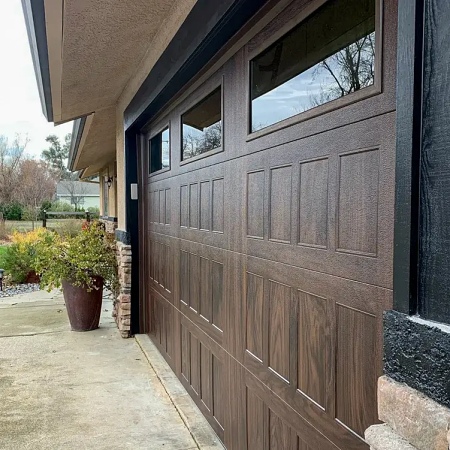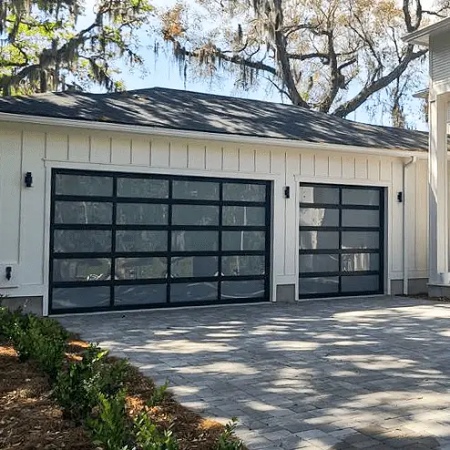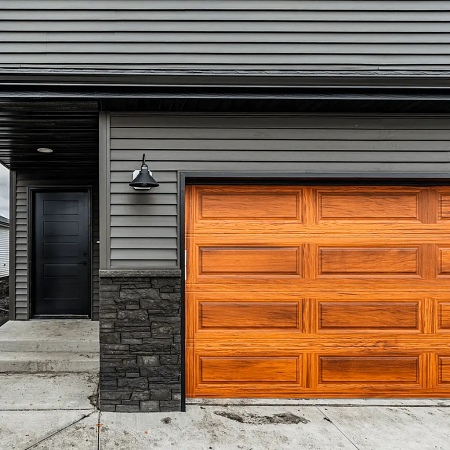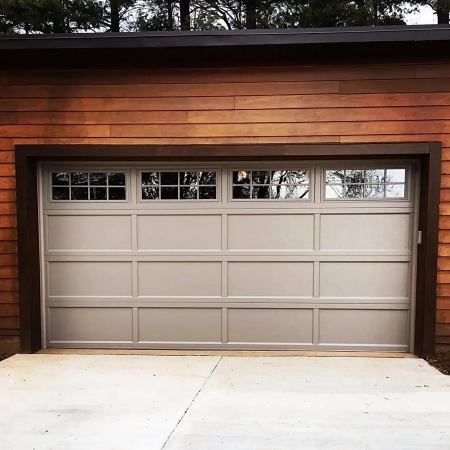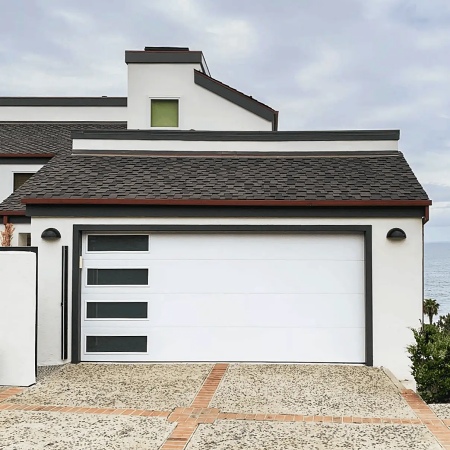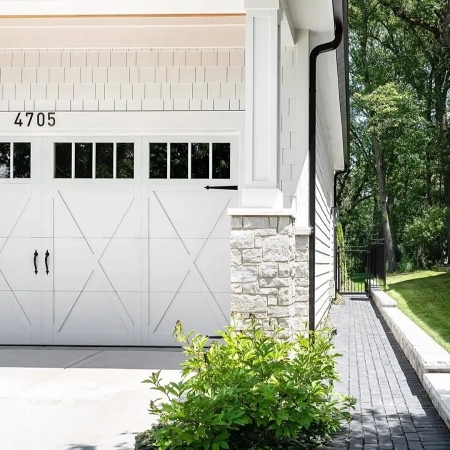Garage Door Panel Styles: A Professional Guide
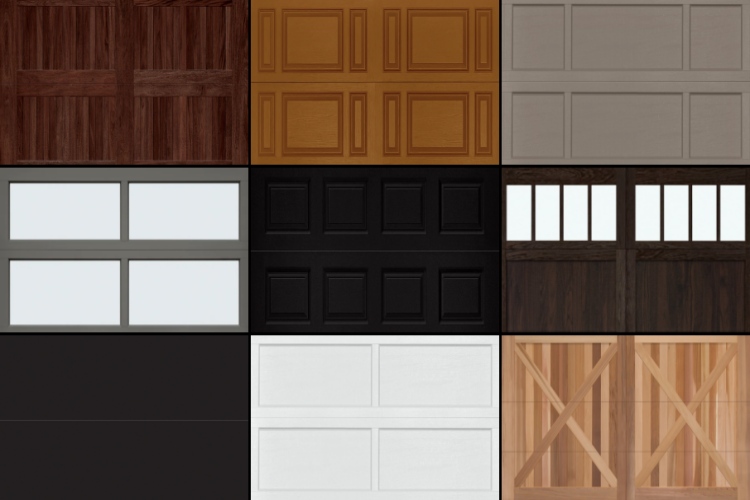
The modern garage door has more than five-dozen structural and operational components, yet most people only ever see the garage door panels. It's the face of a garage door that gives it its personality and the panels are that face. Be they wood, steel, fiberglass, or some other material they are what people think of when they think of garage doors. In this post, the garage door installation experts at A Better Garage Door will take an up-close look at the fascinating world of garage door panel styles.
Why Do Garage Doors Have Panels?
Before we get into our discussion of garage door panel styles let’s first address a very basic question: why do garage doors have panels in the first place?
The nature of the overhead garage door requires that it not only is lifted up and out of the way of your car but that once lifted that it fit into the often cramped space near the garage ceiling. To do that it needs to be able to turn the corner from vertical to horizontal and the only practical way to make that happen is to divide the door up into horizontal segments.
- Stamped shaker – This panel design features clean, squared-off recessed segments that evoke the classic shaker cabinet look. It's a popular choice for homeowners seeking a timeless yet subtly modern appearance.
- Sterling panels – Sterling doors offer a sleek, flush panel look with minimal lines and maximum surface simplicity. They're ideal for ultra-modern homes where a clean, contemporary aesthetic is key.
- Full view aluminum – These panels combine sturdy aluminum frames with expansive glass panes for a crisp, modern look and ample natural light. They're often chosen for contemporary builds, studios, and commercial-style homes.
- Raised panels – These are some of the most popular garage door panels. The center of the panel is raised from its surrounding material creating visual interest and a sense of solidity.
- Recessed panels – These are the opposite of raised panels in that the center of each panel is pushed back with the surrounding material appearing to be raised.
- Flush panels – This type of panel is typically seen on homes that feature a minimalist design. The overall appearance of the flush panel door when closed is of one smooth slab.
- Carriage house panels – Carriage house panels are only going to work on carriage house-style doors that swing open on hinges. They feature long vertical raised or recessed strips.
Whether you choose one of the styles listed above or you opt for a completely custom garage door with one-of-a-kind panels for your Broomfield or Parker home the variety of choices at your disposal is vast. When choosing which panel type to have on your garage door the most important thing is to make sure the panels dovetail with the other design elements of your home.
For instance, if you have shutters on your home that have raised panels in the center your garage door should also have raised panels. Likewise, if your home is aggressively modern with little architectural embellishment and comprising clean geometric shapes and forms, your garage door should forego raised, recessed, ribbed, or beaded panels and go with the flush panel look.
How do I Know How Many Garage Door Panels I Should Have?
There is no hard and fast law dictating that you must have X or Y number of panels on your overhead door. The number will almost always be driven by the style of the door you choose. Also, whether you choose to have windows or not will not affect the overall number of panels. Some wooden, fiberglass, or other panels on the door will simply be swapped out for glass.
Most standard doors have four horizontal sections, (though that number may change with a custom-designed door). How many panels you have will then be a case of four horizontal panels times the number of panels for each horizontal section. That number will vary depending on the overall width of the door. For a single-car garage, it will likely be four panels across (16 panels total). For a two-car garage with a single door, it may be eight panels across (32 total panels).
Remember, the more panels the door has the ‘busier’ it will look. This is especially true if you're opting for raised or recessed panels. You can minimize this effect by choosing panels with only a slight raise or recess to them.
Expert Garage Door Installation and Repair in Parker
The panels you choose will determine how well your garage door integrates with the rest of your home's exterior. To a certain extent, they will also influence how much maintenance your door needs (a lot of glass panels require a lot of cleaning).
The good news is that you are bound to find a style of the garage door panel that matches the architectural style of your home while also providing the safe and reliable service you need. To learn more or to order garage door repair contact A Better Garage Door by calling (303) 920-2267.
